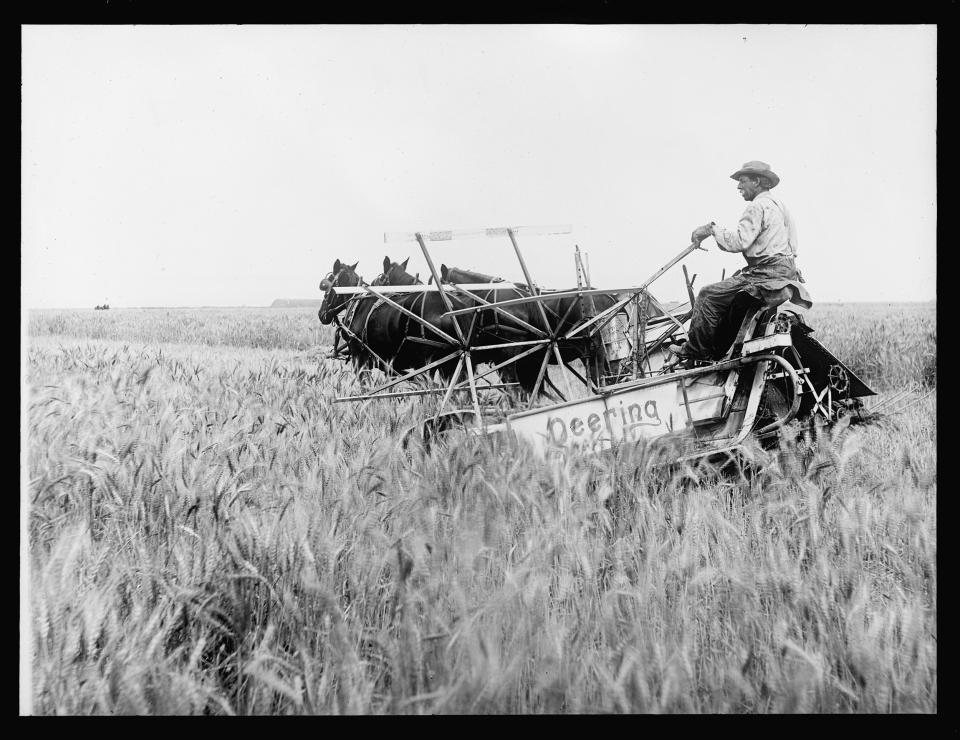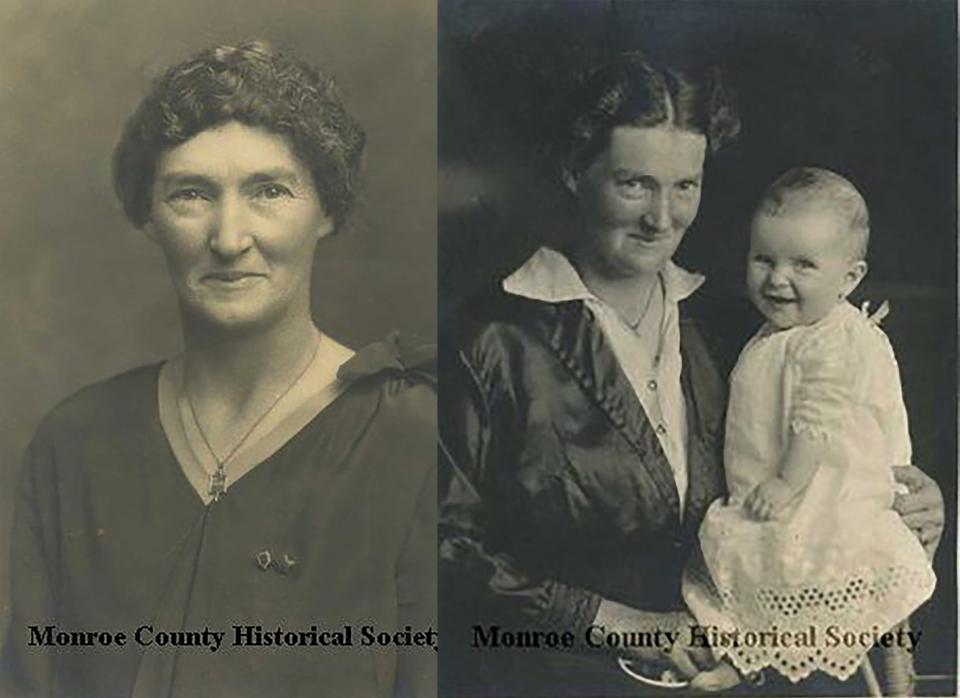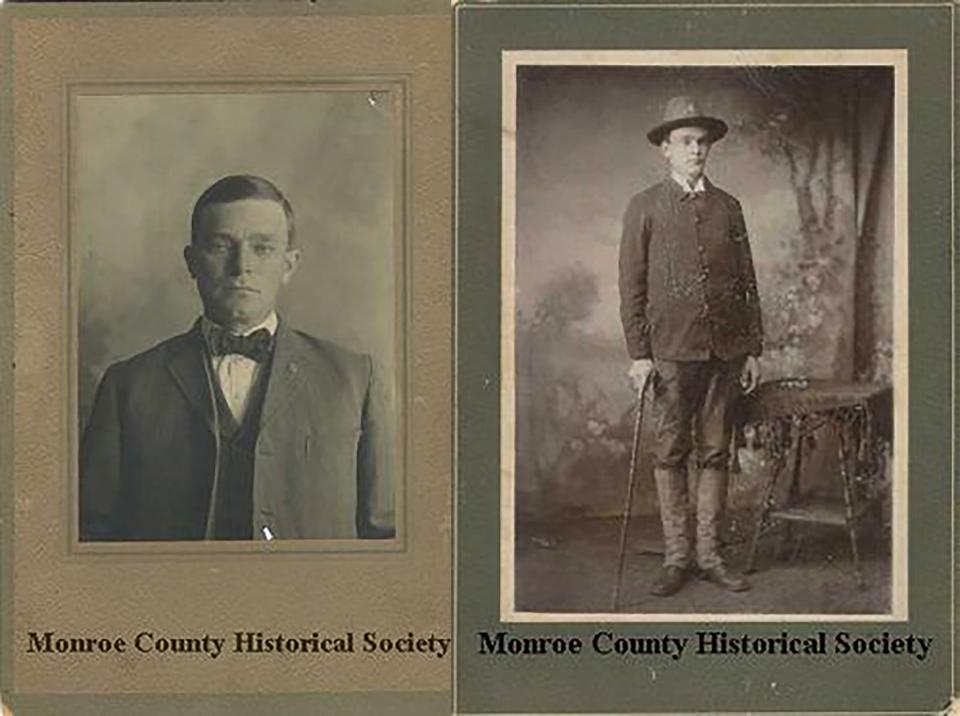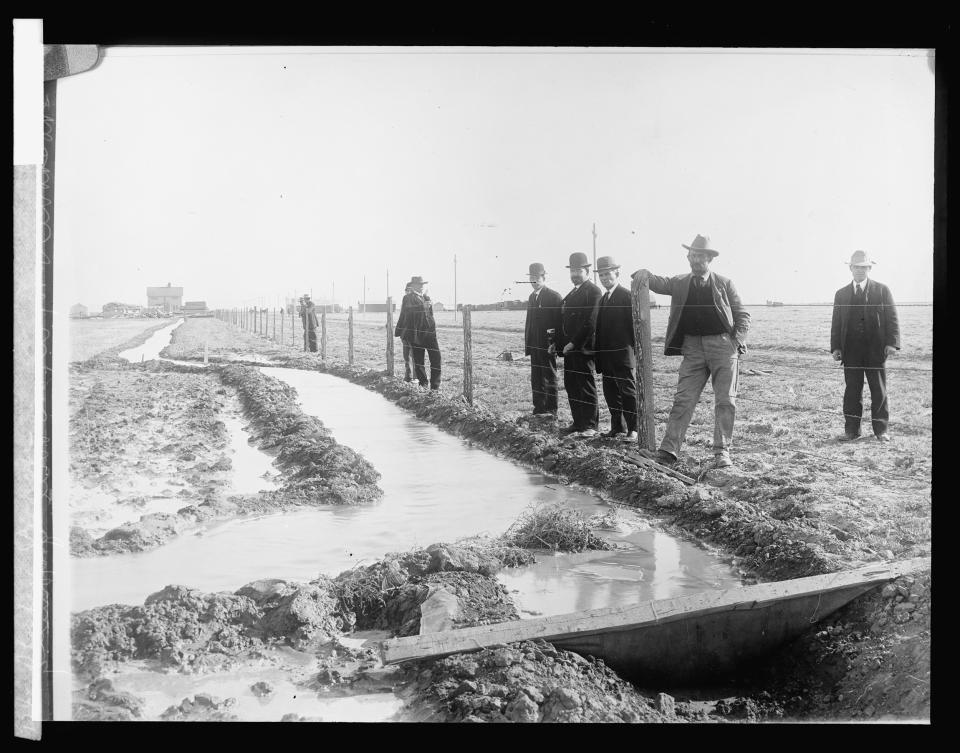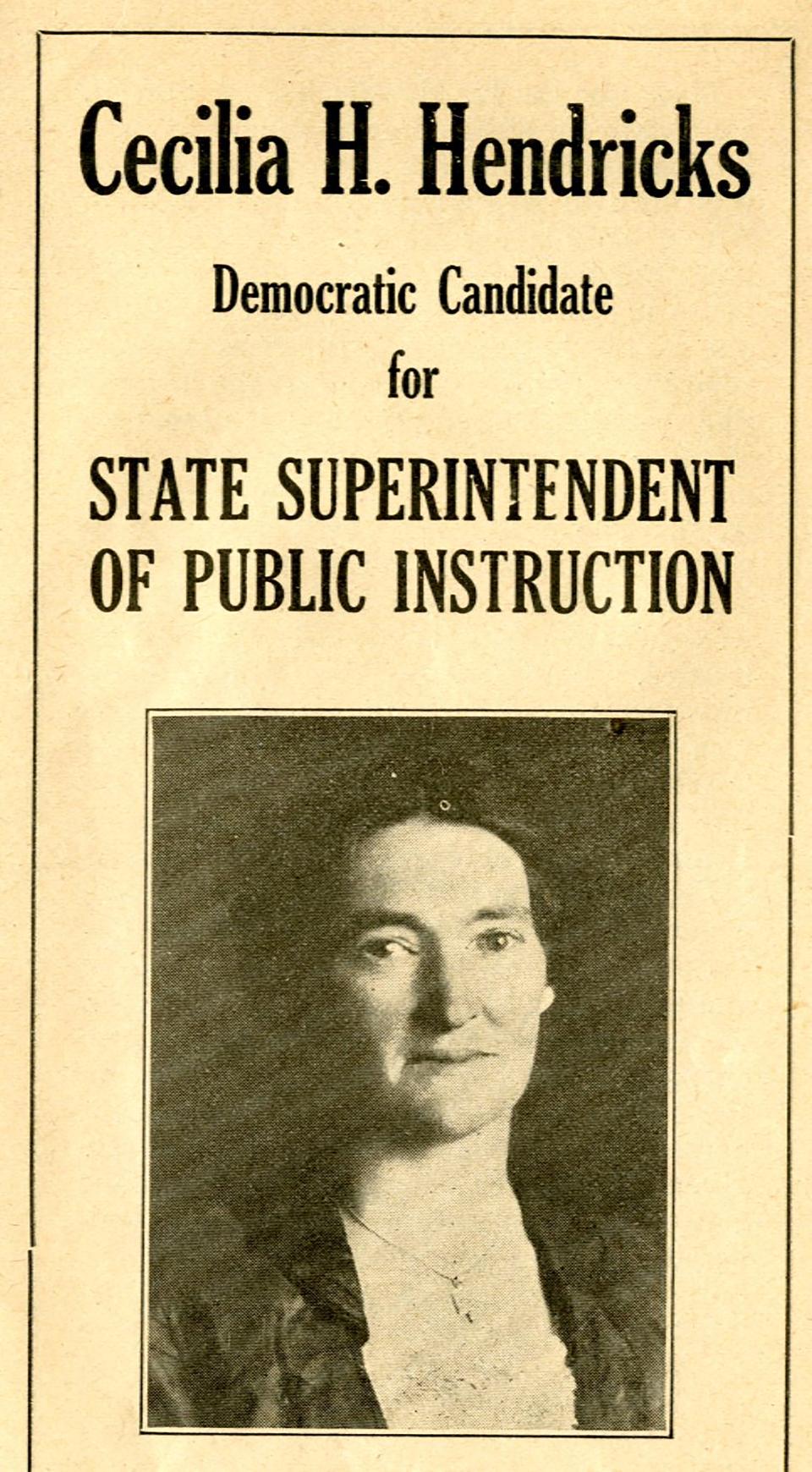- Home
- Encyclopedia
- Homesteader Cecilia Hendricks: Letters From Hon...
Homesteader Cecilia Hendricks: Letters from Honeyhill
Late in 1911, John Hendricks, writing from a farm in Wyoming, proposed to 28-year-old Cecilia Hennel in Indiana. She noted in her diary, “I got a letter today from someone who signed himself John Hendricks, asking me if I would consider a proposal of marriage from him. … I should like to know who he is, and how he got my name … [he must be] somebody pretty ‘fresh.’” Several months later, April 21, 1912, she wrote in her diary that she learned from her aunt that she’d actually met Hendricks before. Cecilia Hennel by then had taught school to earn enough money for college and by 1908 had earned both bachelor’s and master’s degrees in English from Indiana University, in Bloomington, and began teaching there, working both as an instructor of English and an assistant editor of university publications.
She and her sister Cora were so homesick, even when they were apart for only a few days, that they wrote each other daily.
John Hendricks, 37 years old at the time of his proposal, had been injured in Cuba in the Spanish-American War in 1898, and left disabled. His sciatic nerve was permanently injured, and he depended on a crutch for the rest of his life. In and out of veterans’ hospitals for the next decade, he knew he could never do regular farm work. He took many correspondence courses and eventually adopted beekeeping as a hobby.
In February 1911, he moved to Wyoming to establish a honey farm because he’d discovered that Wyoming was the best place for his health.
That year, the U.S. Reclamation Bureau completed a dam on the Shoshone River in northwestern Wyoming, later renamed the Buffalo Bill Dam. By 1915 2,753 acres were irrigated on the project. For the first several years, sweet clover was the best crop to grow, and this attracted professional beekeepers. Hendricks was one of the first to file for a homestead on the project, in February 1911, about a mile southwest of Garland, a hamlet on the Burlington Railroad five miles east of the Park County town of Powell, Wyoming.
On May 26, 1912, Cecilia noted in her diary that she “received another letter from Wyoming. Poor man. He is dreadfully lonesome. … I never had a letter that made my heart ache so. … That he is a real hero, his life in Cuba and more especially since has shown. It seemed to me that if anyone deserved honoring on Memorial Day it is he. Consequently I wrote him a Memorial Day letter. It’s more worthwhile to send flowers to a live hero than to a dead one.”
John and Cecilia were married in Indiana on Dec. 30, 1913. Her friends told her she was wasting a good education to become a farmer’s wife, but Cecilia felt they were wrong, and that she needed her education all along. Through Cecilia’s letters to her mother, we gain a picture of life on Honeyhill farm.
A prosperous time for agriculture
Between 1910 and 1920, the number of family farms and ranches in Wyoming increased from 10,987 to 15,748, a jump of nearly 45 percent. Most of these operations were between 250 and 500 acres. Farmers raised beef cattle, sheep and pigs. Crops included oats, wheat, corn and sugar beets. Many farms and ranches also had a milch cow. By 1920, 49.1 percent of all Wyoming farms were mortgaged.
From 1913-1918, Wyoming farmers prospered due to wartime demand for potatoes, wheat, oats, hay, cattle and horses. Many used their profits to buy war bonds, which were sold 1913-1919.
In February 1914, the Hendrickses got a rocky start with failed honey sales. John bartered honey for produce, hay and coal, however. Then, unexpectedly, a Minneapolis dealer bought the remainder of their honey. John surprised Cecilia with “84 quarts of tomatoes, 60 quarts of peaches, 45 of plums, 15 gallons of canned apples, 3 or 4 gallons of apple butter, and 21 glasses of jelly.” He didn’t do the canning himself, but contracted with neighbors. Cecilia also canned beef.
In February 1914 she reported churning a batch of butter in 15 minutes. Like many other farmers and ranchers, the Hendrickses had a Jersey cow, so there was plenty of milk and cream.
In 1916, they sold 5,000 pounds of honey. By 1918, they had in their cellar “canned peas, beans, corn, carrots, asparagus, greens, and tomatoes.” As well they had pickled vegetables and fruit plus dry beans. Cecilia also planned to can more beef. In 1921, Cecilia reported that they also had flour and fresh eggs. “[W]e could go a long time without ever seeing the inside of a store,” she wrote.
Also in 1918, John bought a tractor, joining the trend toward mechanization.
The Hendrickses produced both comb honey and extracted honey. To retard granulation, the extracted honey had to be heated. For railroad shipment, the honey had to be packed in straw bales to protect it from jarring.
By the mid 1920s, they would be selling honey by the railroad-car load. On May 23, 1926, Cecilia wrote, “We have had some very nice compliments on our honey recently. We have sold a car the past two seasons to Dadant and Sons, the firm that is about the most expert in the whole country. … Some time ago they wrote us about the cars of honey they got from us in 1924 and 1925, asking just what system of heating we used, as the honey did not granulate for months and months. … [in another letter] They spoke again of our honey and said they would want another car this year.”
Comb honey had its own protocol. It had to be graded, “first, choice, and second.” There were also weight and color requirements. The cases in which it was packed had to be glass-fronted.
Busy as she was, Cecilia found time to watch sunrises and sunsets, about which she raved to her mother.
In addition to producing honey, the Hendrickses grew sweet clover, about 35 acres in 1915.
In early October 1916, Cecilia—eight and a half months pregnant—began drafting a short form letter to clover buying firms, using a Burlington Railroad directory of industries to find these companies.
On Oct. 26, their daughter, also named Cecilia, was born. Apparently Honeyhill Farm had begun to prosper, thanks in no small part to water from the Shoshone Dam project. The day after Cecilia’s birth, John presented his wife with a solitaire topaz ring, possibly an entire carat. “The thought and the ring are the most beautiful I’ve known for a long time,” Cecilia wrote.
Although she no longer had time to write to her mother daily, Cecilia continued sending frequent letters. From these we learn that in November 1917, when small Cecilia was about 13 months old, the Hendrickses netted almost $1,396 from clover seed sales. On Christmas day, a check for $3,238.85 arrived, representing honey exported to Europe for the Allies. This shipment slid just under the wire of the Dec. 1 federal embargo on overseas honey shipments. John and Cecilia were in debt, and paid down much of it with the money. However, unlike many Wyoming farms and ranches, they had no mortgage.
Substantial earnings
Cecilia documented their 1918 earnings in a Jan. 20, 1919, letter: All told, they received more than $40,000 for honey, clover seed, fruit and potatoes. Expenses were about $3,800, plus another $3,000 for hired labor. “So I am afraid we will have to be at home this year when the income tax man appears,” she wound up.
Two days before, she assessed the Spanish influenza situation, mentioning almost no serious cases in the area, attributing this to the quarantine of Powell from the beginning of the epidemic.
In late fall or early winter 1919, the Hendrickses received a $1,300 payment for comb honey, with another $6,000 arriving on Dec. 21, and another $600 to come. “We still have on hand two or three thousand dollars of extracted honey,” she wrote the next day.
A new house
Now that John and Cecilia were prospering, they began building a new house. By July 16, 1920, construction had begun. With a scary November 1920 interlude when small Cecilia contracted whooping cough—she recovered—the next main event was moving into the new house, on Dec. 30, 1920. Their prosperity up to this time was probably due in part to no bad winters, and no droughts.
Their son, Jules Ord, was born June 4, 1921—the answer to small Cecilia’s prayers for a brother—and a second daughter, Anne, was born August 12, 1923.
Most agricultural prices fell steeply after World War I. The price of potatoes, for example, plummeted in 1921.
Life became substantially more difficult for small operators in Wyoming because banks refused them new or additional loans, denied them more time to pay off those loans and required additional security. Foreclosures were frequent. Banks began failing—the pace of bank failures reached its peak in 1924.
The irrigation project may have protected the Hendrickses from a severe drought which swept much of Wyoming in 1919—and the demand for their honey seems to have remained strong. John estimated their 1921 honey crop at between 25,000 and 30,000 pounds, but neither he nor Cecilia mentioned a hoped-for price.
In 1921 the Garland bank failed, but Cecilia noted this only in passing; so apparently she and John lost no money in the failure.
Politics
Cecilia seems to have kept her eye on local, state and national politics. In 1914, she noted that four Western states had recently passed Prohibition laws, adding, “Things aren’t as bad as they sometimes look.” Five years later, Wyoming adopted Prohibition, with the federal government enacting it the following year.
In 1922, she became much more active. That year, John and Cecilia ran for public office; John ran to represent Park County in the Wyoming House of Representatives, and Cecilia, surely full of ideas from her years teaching in public schools and at the university, ran for State Superintendent of Public Instruction—a position that is elected by voters statewide. Both won in the Democratic primary but lost the general election in the fall. “Neither of us feels the least bit badly about being defeated. . . . the price one would have to pay is really too much,” she wrote.
Also that year, the Cheyenne lawyer William B. Ross ran for governor on the Democratic ticket. In an Aug. 20, 1922 letter, Cecilia urged Democratic state committeemen and county chairmen to support Ross in the primary election two days away. Ross won the general election in the fall, and began pursuing his Progressive agenda. But he died unexpectedly in October 2024. His wife, Nellie Tayloe Ross, ran in a special election to replace him, and won, becoming the nation’s first woman governor. Cecilia spoke in her support in Garland, and the next day, in Powell.
When Ross ran for re-election in 1926, Cecilia was extremely active in her campaign, writing letters to prominent women around the nation seeking financial support. At the same time, Cecilia ran again for state superintendent on the Democratic ticket. Indiana University Bloomington archivist Andrea Barbour, familiar with Hendricks’s political correspondence, has noted that Hendricks may have worked harder on Ross’s campaign than she did on her own. Both women lost; the state was swinging back to the Republican Party and up to that point no Wyoming governor had ever been re-elected.
Three days after the election Hendricks wrote Ross a long letter musing on politics and the role of women in public life. “I feel personally,” she wrote, “in spite of defeat, that there is a good deal of comfort to be derived from participating in a campaign, for when one counts the increased information about her state, the contact with fine people everywhere, the friendships made, and above all, the knowledge gained that will be the basis for better work in the future, one must feel it is all far more than worth while.”
Love letters and anniversaries
On May 25, 1922, 10 years after she “began to love” John, Cecilia was visiting her parents in Bloomington and wrote to John, “[Y]ou have risen [in her estimation] higher and higher as I have learned to know you better and better. … For ten years now I have loved you. They have been the happiest years of my life.”
From Honeyhill John replied, “The ten years since that day have brought me the richest, fullest, sweetest and most contented life possible.”
On Dec. 30, 1928, Cecilia wrote to her mother, “Fifteen years ago tonight John and I were on our way to Evansville [Indiana, apparently to get married] at this time. My, it does not seem like fifteen years ago.”
Carrying on a tradition
Cecilia continued the tradition of educated farm and ranch women in Wyoming in the early years of the 20th century who wrote about their experiences; others include Elinore Pruitt Stewart, Ethel Waxham Love and Florence Blake Smith. They all worked hard and helped their neighbors whenever called upon.
Separated by death
John died on Dec. 14, 1936, in Billings, Montana. Cecilia then returned to Bloomington, where she taught English for 28 years, founded the Indiana University’s Writers’ Conference and retired in 1953. Outliving John by 33 years, she died on July 15, 1969.
Presumably they were happy for the duration of their marriage.
[Editor’s note: Special thanks to the Wyoming Cultural Trust Fund, support from which in part made publication of this article possible.]
Resources
Primary Sources
- Billings Gazette, Dec. 15, 1936. “Bighorn Basin Man Dies Here,” accessed July 26, 2024, available to patrons at the Natrona County Public Library.
- Findagrave.com. “John Hendricks,” accessed July 26, 2024, available to patrons at the Natrona County Public Library.
- Hendricks, Cecilia Hennel. Letters from Honeyhill: A Woman’s view of Homesteading 1914-1922. Compiled and edited by Cecilia Hendricks Wahl. Boulder, Colorado: Pruett Publishing Company, 1990.
- Hendricks, Cecilia Hennel. Letters from Honeyhill: A Woman’s view of Homesteading 1914-1931. Compiled and edited by Cecilia Hendricks Wahl. Boulder, Colorado: Pruett Publishing Company, 1986.
- Indianapolis News, July 16, 1969. “Special in the News,” accessed July 26, 2024, available to patrons at the Natrona County Public Library.
- State of Montana Bureau of Vital Statistics. Death Certificate, John Hendricks, accessed July 26, 2024, available to patrons at the Natrona County Public Library.
Secondary Sources
- Barbour, Andrea. “Cecilia Hennel Hendricks and the First Woman Governor.” Indiana University Bloomington Archives blog post, Oct. 6, 2016, accessed Aug. 19, 2024 at https://blogs.libraries.indiana.edu/iubarchives/2016/10/06/cch-and-ntr/.
- Bonner, Robert E. “Town Founder and Irrigation Tycoon: The Buffalo Bill Nobody Knows.” WyoHistory.org, Oct. 20, 2015, accessed Aug. 15, 2024 at https://www.wyohistory.org/encyclopedia/town-founder-and-irrigation-tycoon-buffalo-bill-nobody-knows.
- Houze, Lynn Johnson. “Park County, Wyoming.” WyoHistory.org, Nov. 8, 2014, accessed Aug. 15, 2024 at https://www.wyohistory.org/encyclopedia/park-county-wyoming.
- Johnston, Jeremy. “Powell, Wyoming.” WyoHistory.org, Nov. 8, 2014, accessed Aug. 15, 2024 at https://www.wyohistory.org/encyclopedia/powell-wyoming.
- Larson, T.A. History of Wyoming, 2nd ed., rev. Lincoln: University of Nebraska Press, 1978, 395, 397.
- National Park Service. “Buffalo Bill Dam, Wyoming.” WyoHistory.org, Nov. 8, 2014. accessed Aug. 15, 2024 at https://www.wyohistory.org/encyclopedia/buffalo-bill-dam-wyoming.
- Rea, Tom. “Booze, Cops, and Bootleggers: Enforcing Prohibition in Central Wyoming.” WyoHistory.org, July 16, 2016, accessed Aug. 15, 2024 at https://www.wyohistory.org/encyclopedia/booze-cops-and-bootleggers-enforcing-prohibition-central-wyoming.
- _______. “1924: The Year the Banks Closed.” WyoHistory.org, Sept. 9, 2017, accessed July 15, 2024 at https://www.wyohistory.org/encyclopedia/1924-year-banks-closed.
- Trenholm, Virginia Cole, ed. Wyoming Blue Book, vol. II, pp. 604, 606, 608, 613, 615.
- Wyoming State Historic Preservation Office. Michael Cassity, Wyoming Homesteading, Ranching, and Farming: 1860-1960. Historic Context. Timeline of Ranching, Homesteading and Farming in Wyoming, 1860-1960, accessed July 26, 2024 at https://wyoshpo.wyo.gov/homestead/timeline.html.
Illustrations
- The portraits of John and Cecilia Hendricks are from the Monroe County Historical Society, via findagrave. Used with thanks.
- The 1910 photos of the farmer on the Deering reaper and the businessmen at an irrigation ditch are from the Library of Congress. Used with thanks.
- Cecilia Hendricks’s election poster from the 1926 campaign for superintendent of public instruction is from a blog post at Indiana University Bloomington archives. Used with thanks.

